Almost a year has passed since we planted our first seedlings during the 2010 Earth Week. Our first gardening event brought together members of the Bryn Mawr community in a collaborative and cooperative effort to transform this barren plot of land beside Haffner Dining Hall… …into this:
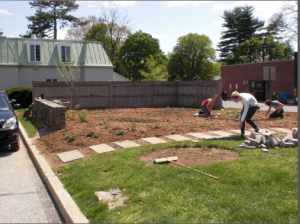

There are four beds circling around a raised center mound. In the back we placed a bench next to our new apple tree!
Since then, we have been lucky enough to see our garden grow and prosper. Although we tend to think of our first harvest as an “experiment session”, it turned out to be much more than that. In this small plot of land we were able to successfully grow a variety of plants such as lettuce, chard, spinach, bok choy, mustard greens, watermelon, turnips, celery, tomatoes, blueberries, & herbs such as basil and rosemary. Many of these were later used in dishes in both Erdman and Haffner dining halls.
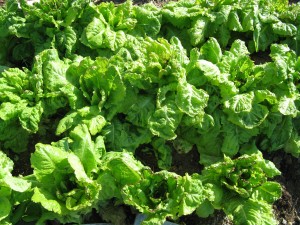
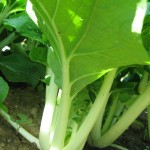
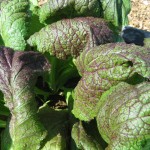
From left to right: Lettuce, Bok Choy, Mustard Greens
(Photo credit: Renee Byer)
Our garden’s success even captured the attention of Bryn Mawr faculty and staff! We were pleasantly surprised when other crops planted by the dining hall staff started appearing. Red bliss and yukon gold potatoes, peppers, tomatoes, red & back beans, corn and even pumpkin sprouted out over the course of the summer.
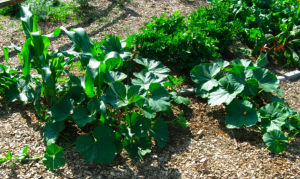
More corn and pumpkin were showing up every day!
Of course, growing such a variety of fruits and vegetables turned out to be quite a chore. I was able to coordinate with garden volunteers and dining hall staff over the summer to ensure that the area was sufficiently watered and weeded, but there were still plenty of times where our garden was growing too voraciously or where it looked too sickly. During our first few gardening phases, problems such as these suggested a need for better long-term planning. For this reason, we are planning to start this semester’s crops ahead of time in the science building’s greenhouse, and pay more more attention to our succession planting strategies when we plant them in the ground. Another method I would like to use in the future would be crop rotation, saving any legumes such as peas and beans for the winter months, or to try companion planting, where these same crops are planted beside those that require a lot of nutrients. These methods ensue soil regeneration, so that we don’t have to worry about overworking the area or relying on heavy fertilizers. Other smaller problems that we encountered are also being addressed. For instance, initially there was no compost bin nearby to draw compost from, or to put in compost-able materials such as weeds. This year we have installed a bin on site where volunteers can place these materials. We have also budgeted for a better irrigation system, so that volunteers do not have to drag out a large hose or buckets of water during their shifts. In the future, I would like to consider installing a rain barrel nearby so that we can also use rainwater for watering purposes.
Overall, this first year had many challenges and many rewards, but I can honestly say that the rewards far outweighed the challenges. Over the scope of a year, our community garden has already evolved into a multi-purpose space, serving as an area for education, social collaboration and communication, and even for relaxation. This year, we aim to take that to a new level by encouraging further collaboration between students and staff (be on the look out for our new mural!), by hosting public events such as Meditation in the Garden, and by providing greater and more diverse amounts of fresh, local fruits & vegetables to our school community.
One of my favorite memories from this summer was stretching down in the garden with some yoga moves after a long day of weeding and watering.
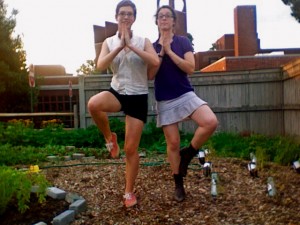
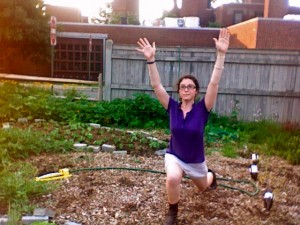

3 Comments
Leave a reply →